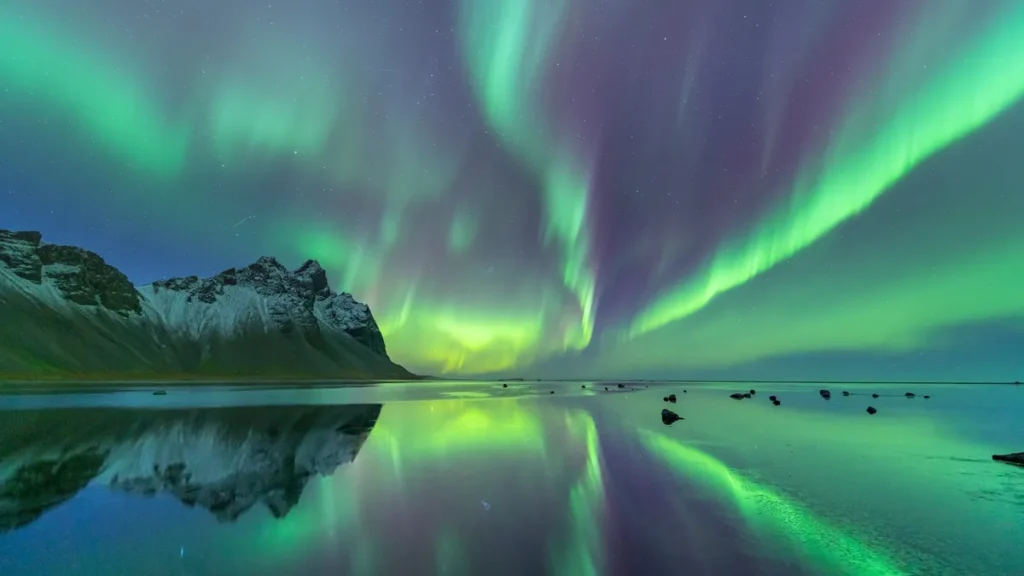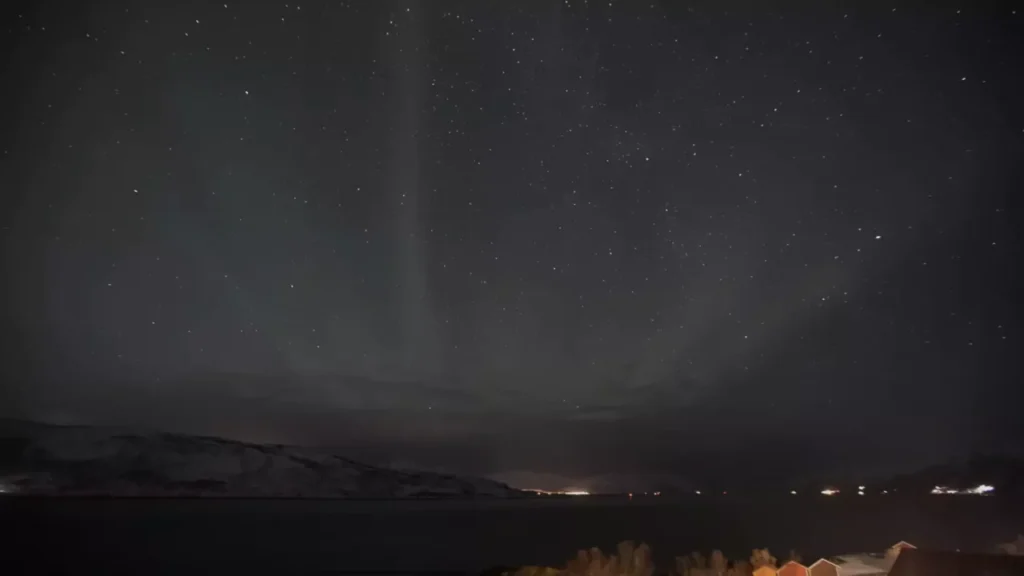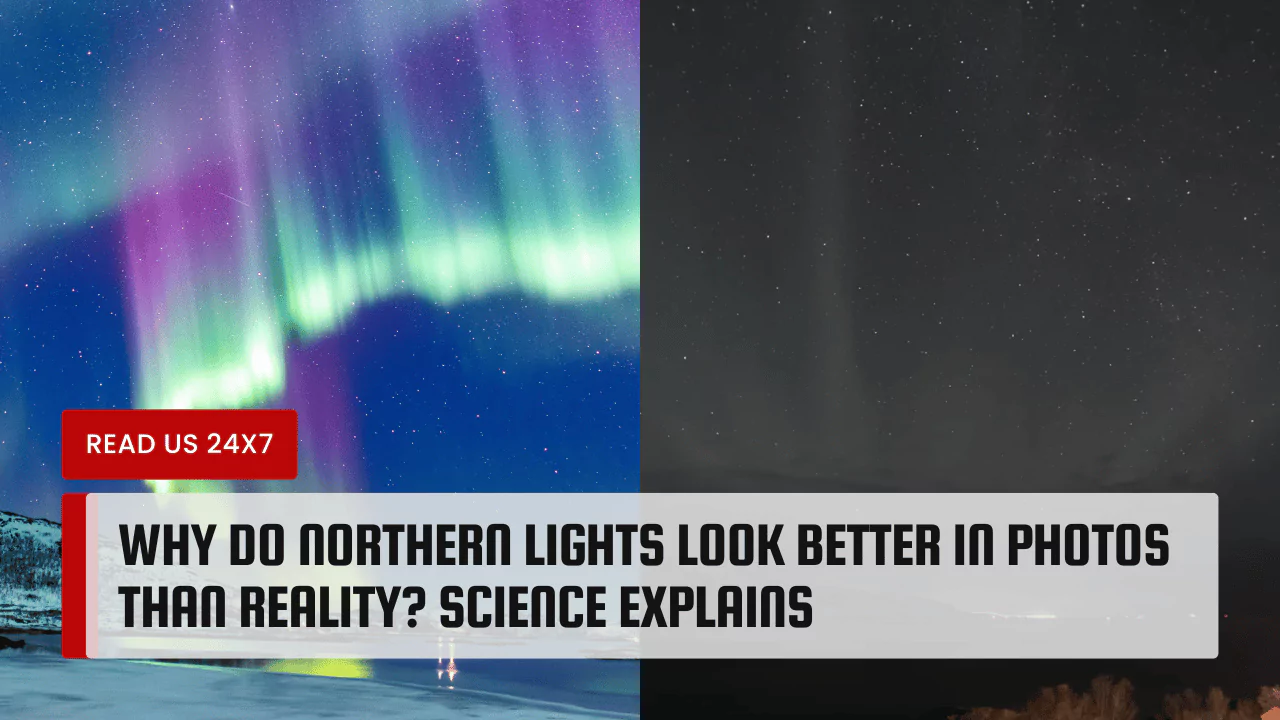Have you ever scrolled through travel photos and been mesmerized by the vibrant greens, purples, and pinks of the Northern Lights? You might be surprised to learn that this dazzling display can appear slightly less vivid to the naked eye. Here’s the science behind why photos often capture the Northern Lights more dramatically than we experience them firsthand.
What is the Northern Lights?
The Northern Lights, also known as the Aurora Borealis, are a natural and spectacular light display that is often seen in high-latitude regions around the Arctic and Antarctic. Here’s a brief explanation of this phenomenon:
The lights are created when charged particles from the sun, which are ejected during solar storms, collide with gases in Earth’s atmosphere. This collision causes the particles to become excited and, when they calm down, they release photons — small bursts of energy in the form of light. It’s these lights that we see as the dancing colors in the sky.
The colors can vary depending on the type of gas molecules the solar particles collide with. For instance, collisions with oxygen typically produce green and red auroras, while nitrogen can cause blue or purple ribbons.
The best time to view the Northern Lights is during the winter months in locations with dark and clear skies, away from city lights. They are a truly mesmerizing sight and one of nature’s most beautiful displays.
Misconceptions About the Northern Lights
Expectations Based on Photos

Stunning photos might lead you to believe the Northern Lights are a constant explosion of vibrant colors filling the entire night sky. While they are undoubtedly breathtaking, the reality can be a bit subtler. The captivating swirls and vibrant hues we see in photographs are often the result of long exposure photography techniques that amplify the faint colors and movement.
Reality of the Northern Lights

The Northern Lights can be quite faint, with colors often appearing more muted and ethereal than in photos. They might flicker and dance, but the movement is often slower and more subtle than long exposure photographs capture. This doesn’t diminish the experience, however. The soft glow and gentle movements across the vast canvas of the night sky create a sense of awe and wonder that’s difficult to replicate in a photograph.
Difference Between the Human Eye and Camera
The key difference lies in how we see and how cameras capture light. Our eyes have two types of light-sensitive cells: rods for low light and cones for color vision. In low light, like when viewing the Northern Lights, the rods take over, limiting our ability to perceive colors. Cameras, on the other hand, can use long exposures to gather more light. This allows them to capture faint colors and details that our eyes simply miss. Imagine the difference between quickly glancing at a starry night sky and gazing at it for several minutes – the longer you look, the more stars you can see. Cameras essentially do the same thing, electronically collecting light over a longer period to reveal the hidden beauty of the aurora.
Factors Affecting the Appearance of the Northern Lights
Time of Day
The Northern Lights are most active during the equinoxes (spring and fall) and around midnight. However, they are also fainter during these times. Stronger displays often occur in the pre-dawn or post-dusk hours, but darkness might limit your ability to see the full spectacle. Ideally, you want clear skies with minimal light pollution for the best viewing experience.
Atmospheric Conditions
Clear skies are ideal for viewing the Northern Lights. Clouds can obscure the display, and light pollution from cities can further dim the effect. If you’re planning a trip to see the Northern Lights, research locations with minimal light pollution and aim for nights with clear skies.
Camera Settings
Photographers use long exposures, adjusted aperture, and ISO settings to capture the faint colors and movement of the Northern Lights. Replicating these settings with your phone camera might be difficult, resulting in less vibrant pictures. However, modern smartphones can still capture decent photos of the aurora, especially if you use a tripod for stability and explore camera settings related to exposure and night mode.
The Beauty of the Northern Lights in Reality
Unique Experience
While photos offer a glimpse, seeing the Northern Lights in person is a truly magical experience. The vastness of the night sky, the subtle dance of light across the horizon, and the feeling of witnessing a natural wonder create a memory far richer than any photograph. It’s a truly immersive experience that connects you to the power and beauty of nature.
Realistic Colors and Shapes
Even though the colors might not be as saturated as in photos, the Northern Lights can still display a breathtaking range of greens, yellows, purples, and even pinks. The ever-changing shapes, from wispy curtains to vibrant ribbons, add to the mesmerizing spectacle. Imagine a slow, graceful ballet of light unfolding across the night sky – that’s the kind of beauty you can expect to witness with your own eyes.
So, while photos might exaggerate the intensity of the Northern Lights, they don’t diminish the real-life experience. The subtle beauty and wonder of witnessing this natural phenomenon firsthand are unmatched. Remember, the next time you see a photo of the Northern Lights, keep in mind the science behind the camera and prepare to be awestruck by the real-life display.



